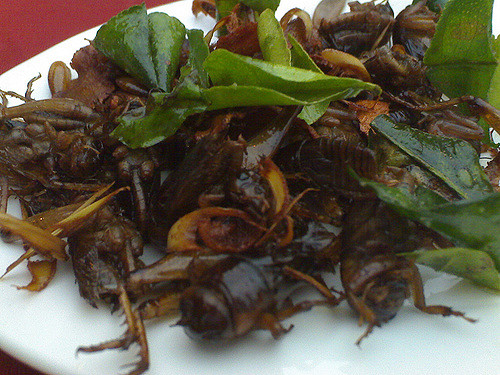Rearing of crickets for human consumption is becoming popular around the world but knowledge on what cricket species that can be farmed and how to keep them in a sustainable way is scarce.
So far, farming of crickets has often been based on the use of chicken feed as feed for the crickets which is not very sustainable and also expensive. Knowledge on the nutrient value of crickets for humans is also lacking although chemical analyses indicate that it could be good. This thesis, by Dr Phalla Miech at the Swedish University of Agricultural Sciences (SLU), contains the first publications to show that field crickets from Cambodia can be reared in captivity on some weeds and agricultural and food by-products (with origin in Cambodia) and also that a mono-gastric animal like pigs (which was used as model for humans) can grow well on a diet including field crickets. It also shows that peeling of crickets (removal of legs), as has been suggested by the European food authority before consumption, seems to be a waste if the crickets are processed into a meal. The legs contain valuable nutrients that should be used, either as food or as animal feed.
Read more about this research here…
